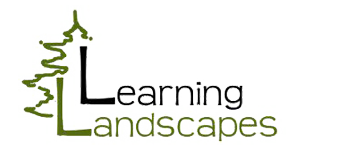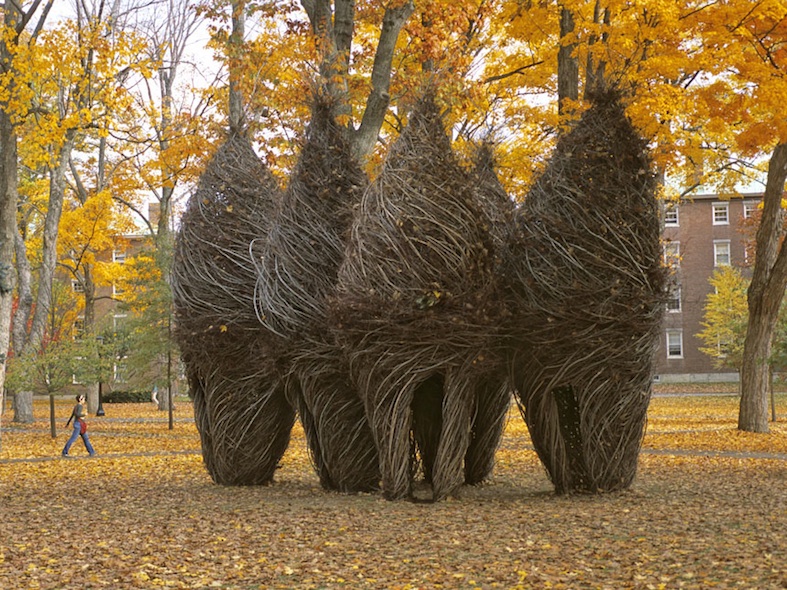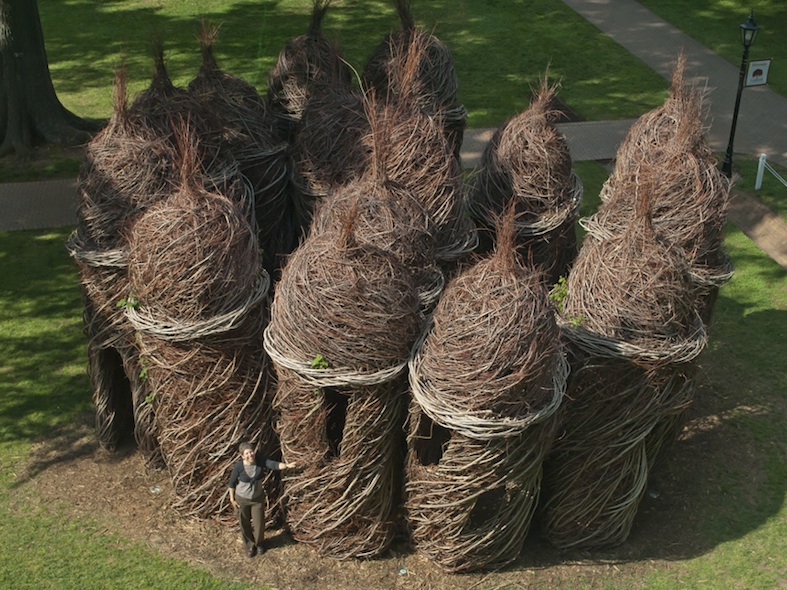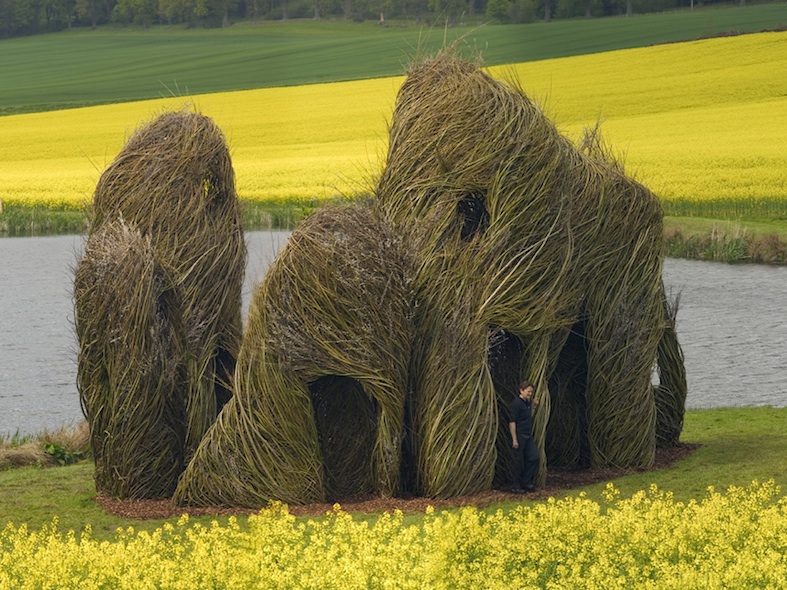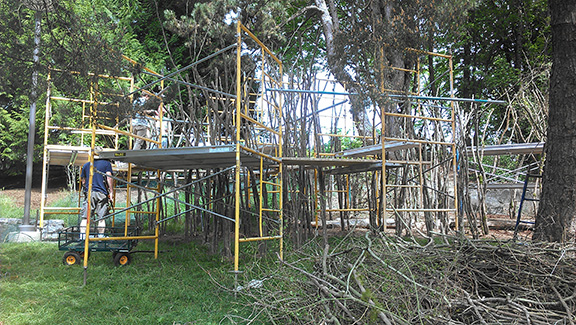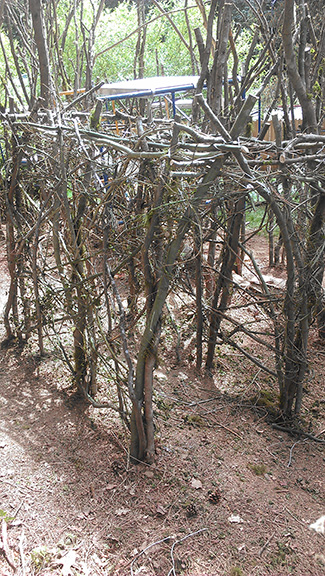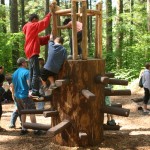Weeks of Wonderful Willow Weaving
The Portland Children’s Museum has recently opened a wonderful outdoor exhibit called Outdoor Adventure. It is a great mix of water, logs, tree climbing, and free play. I promise to share more photos of the whole site soon. What I wanted to share today is the work Patrick Dougherty is doing at Outdoor Adventure this May.
Patrick Dougherty is a world renowned willow weaving artist. His works are usually outdoor woven stick pieces, constructed over three weeks by himself and local volunteers. I believe most of his work is considered temporary (a few years) art installations. Here are some of my favorites to give you the flavor.
Photo from http://www.stickwork.net/
Photo from http://www.stickwork.net/
Photo from http://www.stickwork.net/
The piece he is working on at the Children’s Museum in Portland is a collection of 9 leaning cubes. The spaces have whimsical shapes and mostly open roofs. They create a maze of in, out, and between spaces. I can’t wait for it to be filled with laughing children! I have been volunteering every few days to watch the process. I will detail the process a bit more below. But, what I have been more amazed about is Partick himself.
I met Patrick a few months ago as he met with a group of 4th and 5th grade students at the muesum. They were researching building their own stick sculpture and were asking him all sorts of questions. Most artists I have ran into protect their craft pretty fiercely or have an attitude of elitism. Patrick is light hearted and open. My favorite part of the meeting is when the students asked how he learned to do willow weaving. He stated that he had been doing it for a long time. But, that he believes everyone intrinsically knows how to build with sticks. Our ancestors, and other animals, have built shelters with sticks for all of time. Talk about empowering to a group of young people! He basically said I know you can already do it. He is also this way with the volunteers that assist in the building each day. He offers gentle guidance and knows just what to say to help encourage and correct kindly.
Here is a quick glimpse of the building process.
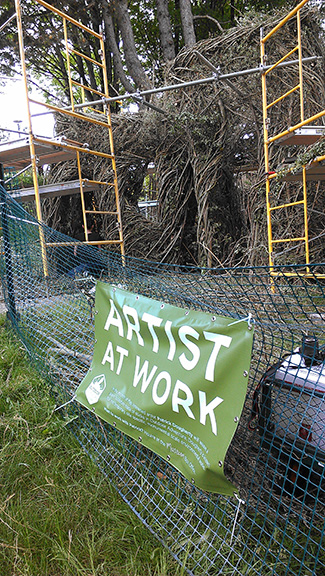
Photo from https://learninglandscapesdesign.com/
At each post hole three large sticks are added. It is hard to see but this maze of sticks forms 9 rectangle features. (Before this photo, and really the entire process, there is a lot of stick hauling around and moving)
 Photo from https://learninglandscapesdesign.com/
Photo from https://learninglandscapesdesign.com/
Horizontal top sticks are added and the cubes are pulled into shape.
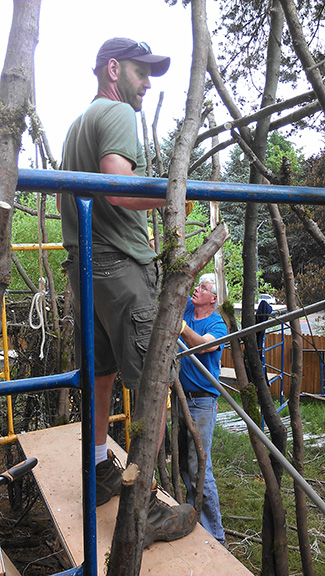 Photo from https://learninglandscapesdesign.com/
Photo from https://learninglandscapesdesign.com/
The tops are trimmed and the cube starts to take shape.
Scaffolding is constructed to work on the taller pieces.
Photo from https://learninglandscapesdesign.com/
The walls are filled in with larger sticks going lots of directions to give a rough form to the cube.
Photo from https://learninglandscapesdesign.com/
The top of each cube is built with a tightly woven crown feature or cap.
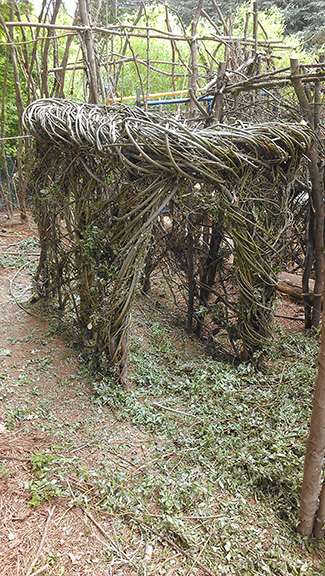
Photo from https://learninglandscapesdesign.com/
The walls are filled in with sticks in sweeping motions. Most of the sticks head the same direction adding motion and movement to the piece.
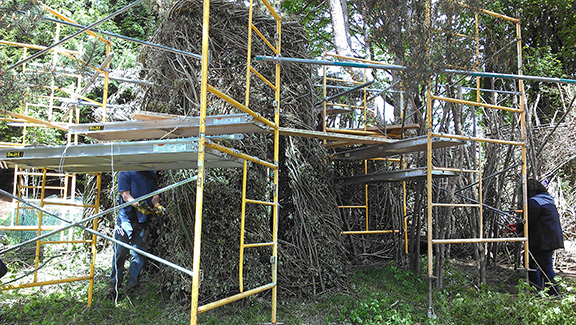
Photo from https://learninglandscapesdesign.com/
After hours of detailed work each piece starts to take form!
Photo from https://learninglandscapesdesign.com/
Here is a minute of work.
I look forward to sharing the final piece with you in a few weeks.
